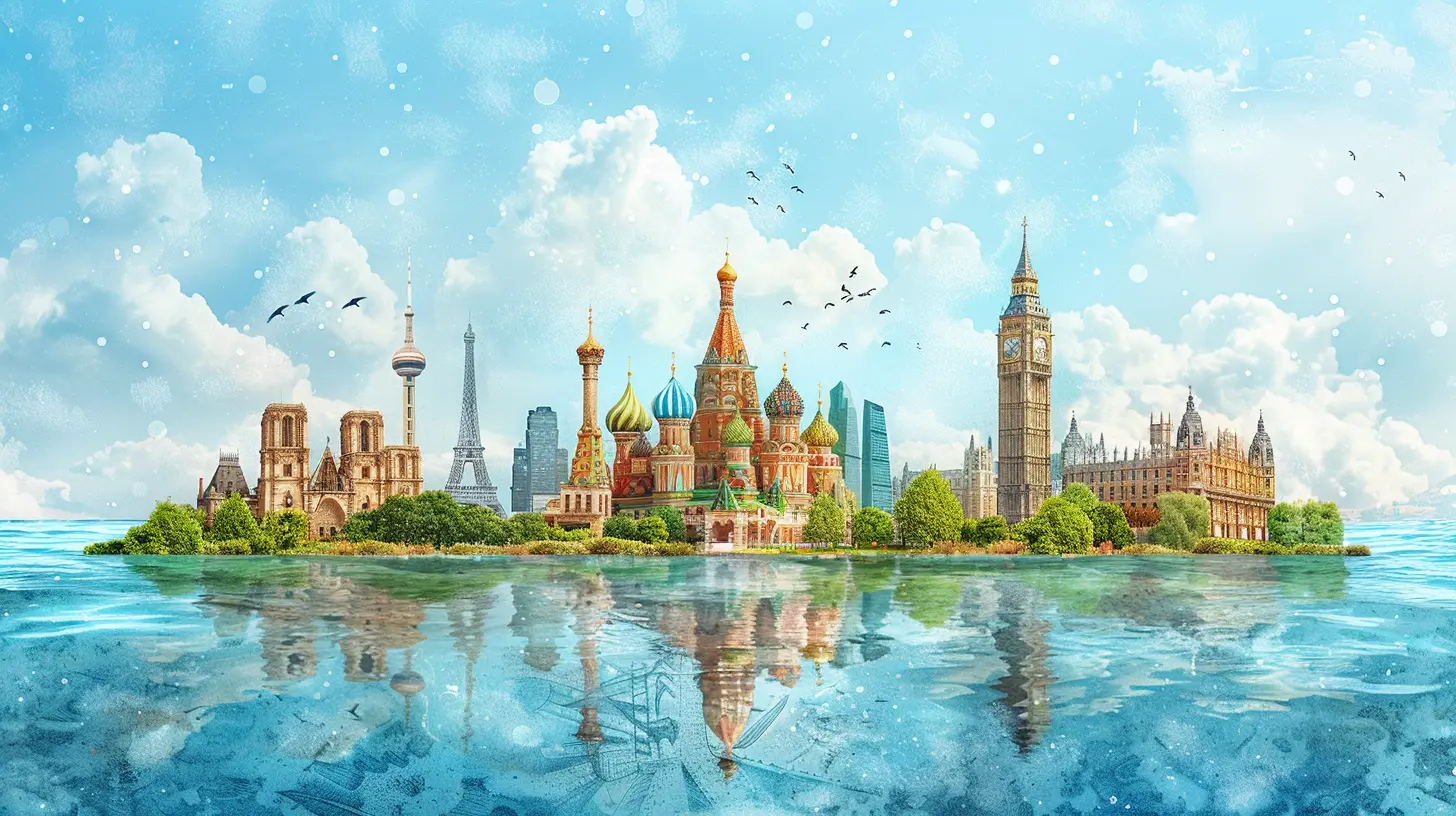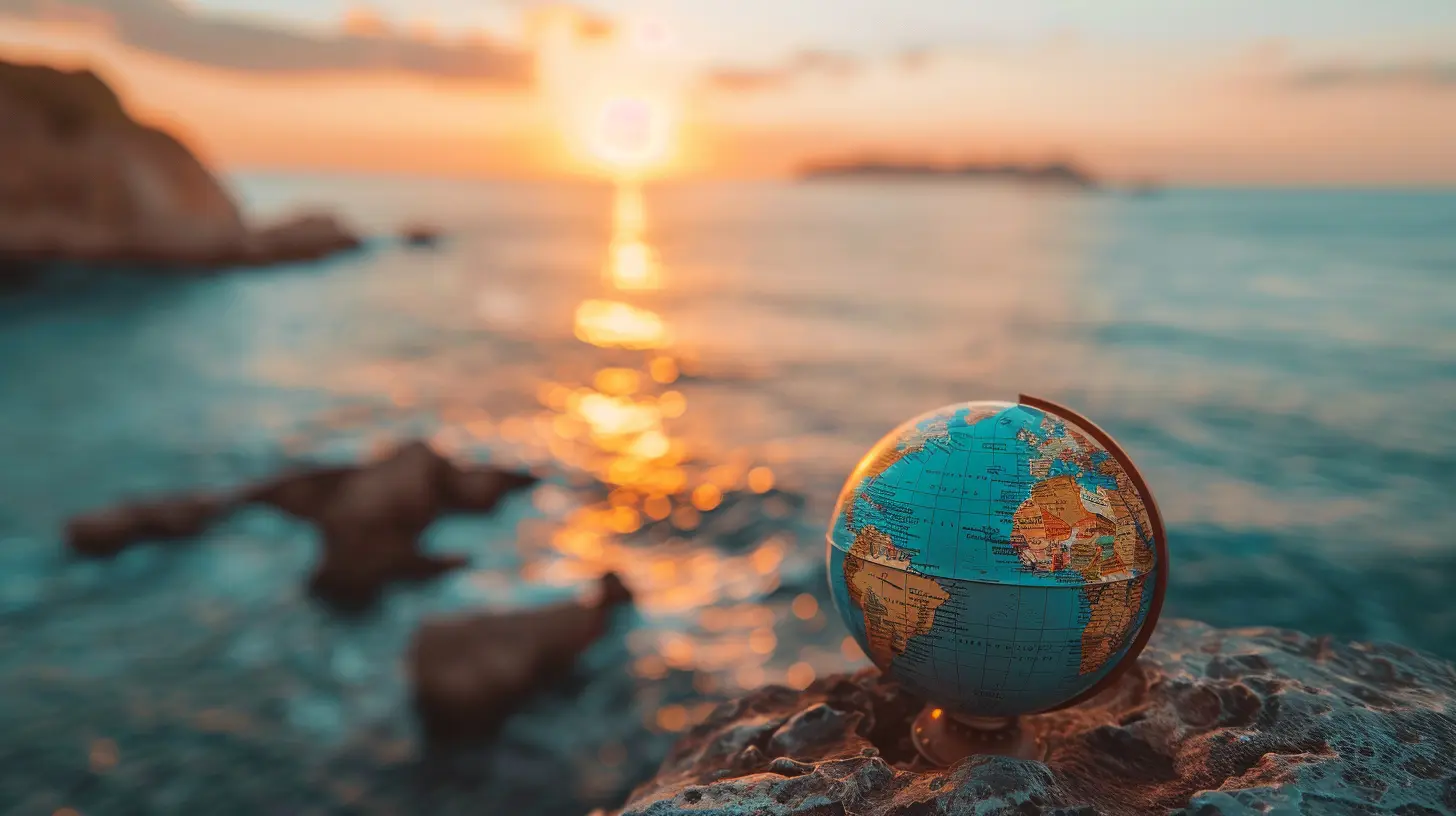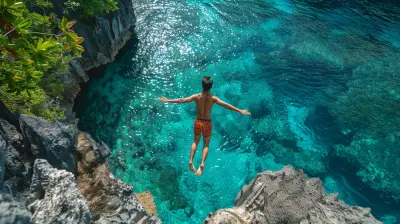Sustainable Travel: How to Explore UNESCO Sites Responsibly
20 June 2025
Let’s be honest—travel is awesome. Jetting off to unfamiliar lands, trying food that may or may not make your stomach question its life decisions, and snapping a million selfies in front of ancient ruins… what’s not to love?
But here’s the kicker: the more we humans roam this gorgeous globe of ours, the more wear and tear we’re putting on its most epic spots. And nowhere is this more obvious than at UNESCO World Heritage Sites. You know, those jaw-dropping, time-travel-worthy destinations like the Great Wall of China, Machu Picchu, and the Taj Mahal? Yeah, those guys.
The good news? You don’t have to hang up your adventure hat. Instead, you just need to travel a little smarter—and maybe swap your plastic water bottle for something that doesn’t give Mother Earth the side-eye.
So buckle up, eco-warrior-in-the-making. We’re going on a sustainable ride to some of the most iconic places on Earth—without leaving a trail of destruction in our wake.
What Exactly Is Sustainable Travel, Anyway?
Picture this: you're exploring the Colosseum in Rome, gladiator fantasies in full swing, but instead of tossing your gelato cup on the ground (shame on you), you hold on to it until you find a recycling bin. That’s sustainable travel, my friend.In fancier terms, sustainable travel means exploring the world in a way that protects the environment, supports local cultures, and pumps money back into communities without ruining the things that make those places special in the first place. It’s like being a tourist, but with a conscience—and maybe a reusable straw.
Why Should You Care About Being Responsible at UNESCO Sites?
Here’s a harsh reality: some UNESCO sites are dealing with a serious case of "too-popular-for-their-own-good." We’re talking erosion, pollution, and local communities getting steamrolled by tour buses and selfie sticks. Not ideal, right?Plus, these sites didn't earn their UNESCO badge on a whim. They’re recognized because they’re either culturally significant, historically important, or jaw-droppingly amazing (scientific term). So, if we want future generations to experience them in all their glory, we’ve gotta be part of the solution.
Heading to a UNESCO Site? Don’t Be That Tourist
Let’s keep it real. We've all seen that tourist. The one carving their initials into ancient stone, flying drones over sacred temples, or feeding a wild monkey a bag of Doritos. Don’t be that guy.Instead, here are some ways you can still soak up all the UNESCO goodness—without being a walking, talking environmental catastrophe.
1. Do Your Homework (Yes, Even on Vacation)
I know… research sounds suspiciously like homework, but trust me—it’s worth it. Not all UNESCO sites have the same rules, capacity limits, or even dress codes. Some places are sacred, some are fragile, and some are both.Before you go, find out:
- When is the off-season (hello, fewer crowds)?
- Are there entry limits or reservation systems?
- What are the cultural customs or sensitivities?
Basically, don’t wing it like your last high school exam. This isn't just a trip—it's a chance to be a superstar guest.
2. Choose Eco-Friendly Transportation (Because Carbon Footprints Aren’t Cute)
Getting to that UNESCO site might involve planes, trains, and automobiles. While teleportation isn’t a thing yet (ugh), you can still make smart choices:- Fly direct when possible (takeoffs and landings = major fuel-guzzlers)
- Opt for trains or buses instead of cars
- Walk or bike when you can (bonus: great glutes)
Also, throw a little shade at your inner gas-guzzler and offset your carbon emissions. There are some cool tools online that let you donate to reforestation projects or renewable energy funds. It’s like a guilt-free hall pass for your travel sins.
3. Stay Local, Like a Boss
Chain hotels? Meh. Try unique guesthouses, eco-lodges, or hostels run by locals. Not only are they often more charming than a beige hotel room with zero personality, but your money actually stays in the community.And while you’re at it:
- Eat local (your taste buds will thank you)
- Buy handmade souvenirs (support grandma’s weaving business, not imported knock-offs)
- Hire local guides (because who knows the area better than someone who lives there?)
Your travel dollars are powerful. Use them like a Jedi master.
4. Respect the Site (Seriously, Don’t Touch the Stuff)
If you wouldn’t lick a museum painting (please don’t), then maybe don’t climb on ancient pyramids or grab chunks of coral to take home. Many of these sites are super delicate—and no, they're not playgrounds.Golden rule here? Look with your eyes, not your hands.
If you’re visiting a natural UNESCO site, stay on marked paths. Going rogue might trample endangered plants or upset local wildlife. I mean, would you like it if someone walked through your living room with muddy boots?
5. Cut the Plastic (Because Dolphins Don’t Do Straws)
Tourist-heavy areas generate a ridiculous amount of single-use trash. And while it might not seem like a big deal to chuck a water bottle, multiply that by a bazillion other tourists, and Houston—we have a problem.So travel like a true eco-ninja:
- Carry a reusable water bottle with a filter
- Bring your own tote bag
- Say no to plastic straws (your mojito will still taste amazing)
A zero-waste travel kit is the new fanny pack. Get with the times.
6. Be a Quiet Observer, Not an Insta-Obstacle
Newsflash: you don’t need to document every moment of your trip like it’s the Met Gala. Sometimes, the best memories happen when you look away from your phone.Yes, take pictures—but do it mindfully:
- Don’t block pathways for your photoshoot
- Avoid using flash in sacred or historical spaces
- Ask permission before photographing people (this isn’t a human safari)
Let the moment breathe. And hey, your Instagram feed can wait.
7. Give Back (It’s Good Karma)
If a UNESCO site totally rocks your socks off, consider giving back. Many sites have volunteer programs, donation opportunities, or conservation initiatives that need a helping hand.You don’t have to join a turtle rescue mission (though that would be wildly cool), but even a small donation can go a long way in preserving these spots.
Real Talk: Can One Person Really Make a Difference?
You bet your biodegradable toothpaste they can.Here's the deal—every sustainable action, no matter how tiny, adds up. And if we want our grandkids to be able to marvel at the Louvre or hike through the Canadian Rockies, we’ve gotta step up our eco-game. It’s like voting—if everyone thinks their vote doesn’t count, we’re all toast.
So yes, your choice to bring a reusable water bottle, support a local artisan, and not etch your name into Petra makes a massive impact.
UNESCO Sites Worth Visiting Responsibly (Aka Your Bucket List with a Conscience)
Need some inspo? Here's a quick list of epic UNESCO World Heritage Sites where your sustainable travel powers can shine:- Galápagos Islands, Ecuador – Wildlife whisperers, rejoice.
- Angkor Wat, Cambodia – Temples and sustainability? Yes, please.
- Cinque Terre, Italy – Pasta, hikes, and eco-tourism packed into five seaside villages.
- Great Barrier Reef, Australia – Swim responsibly, or Nemo will judge you.
- Bwindi Impenetrable Forest, Uganda – Gorilla encounters that don’t involve disturbing their vibe.
Just remember, being eco-friendly isn’t about being perfect. It’s about trying your best and not being a travel tornado.
Final Thoughts: Be Cool, Travel Smart, Save the World (NBD)
Sustainable travel isn’t a trend—it’s the future. And honestly, it’s not even that hard. You don’t need to be a tree-hugging monk living off the grid. You just need to be aware, make smart choices, and maybe swap that plastic poncho for one that won’t outlive you by 500 years.So go forth, explorer of the Earth. Visit those legendary sites. Take those once-in-a-lifetime trips. Just promise me one thing—leave the place better than you found it.
Because the dinosaurs didn’t have UNESCO sites…and look what happened to them. (Just saying.
all images in this post were generated using AI tools
Category:
World Heritage SitesAuthor:

Reed McFadden
Discussion
rate this article
2 comments
William Bennett
Oh sure, because nothing says “I love the planet” quite like snapping selfies at UNESCO sites while sipping organic coconut water in a reusable cup. Just remember, folks, if you don't post it on Instagram, did you even really experience sustainable travel? 🌍📸
October 6, 2025 at 4:13 AM

Reed McFadden
Thanks for your thoughts! It’s true that sharing experiences can enhance awareness, but sustainable travel is about genuine respect for the environment and local cultures, not just the 'Gram. 🌱
Andrew Wright
Thank you for shedding light on sustainable travel! It's heartening to see a focus on protecting our world's treasures. By exploring UNESCO sites responsibly, we can cherish their beauty while ensuring they remain for future generations. Let's travel mindfully and leave a positive impact.
June 20, 2025 at 2:35 PM

Reed McFadden
Thank you for your thoughtful comment! I'm glad you found value in the article. Let's all commit to mindful travel and preserving these incredible sites for future generations!

